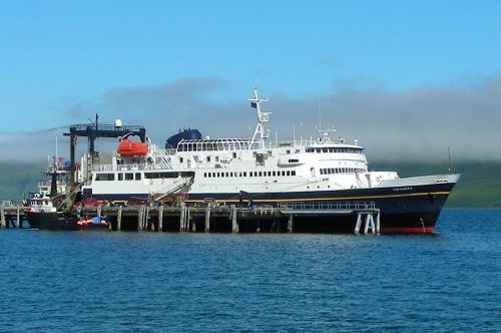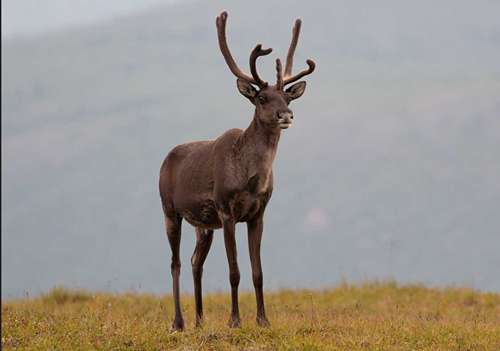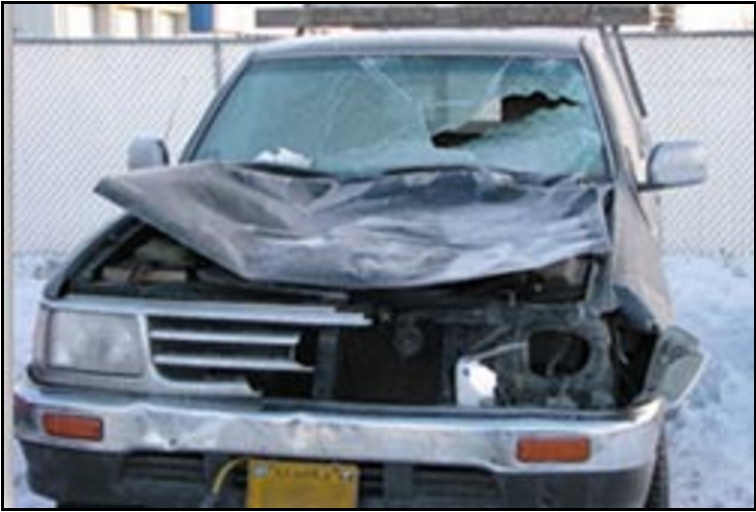Late fall in Alaska means longer nights and shorter, often dimly-lit days. Commuters this time of year – especially in Southcentral and the Interior – are now driving to and from work in the dark. That can be quite an adjustment following a bright summer where the sun shone on the roads nearly 24/7. It also increases the odds of hazardous moose-vehicle collisions.
“Moose are dark-colored animals and, with no snow yet on the ground for contrast, seeing them at night can be next to impossible,” said Troopers Captain Rick Roberts.
The combination can be deadly for moose and motorists alike. Drivers are sometimes injured and even killed when vehicles traveling at normal highway speeds collide with the animals that may weigh 500-1,000 pounds.
To help prevent collisions with moose, the Alaska State Troopers and our colleagues at the Alaska Department of Fish and Game (ADF&G) suggest drivers practice the following safe fall/winter driving habits:
• DRIVE ACCORDING TO WEATHER CONDITIONS. Reduced driving speeds at night and during adverse weather conditions allow motorists better opportunity to spot moose near roadways and provide more time to react should animals bolt into the road.
• BE ALERT. Deliberately scan for wildlife on both sides of the road and along road corridors and medians.
• STAY TUNED. Cow moose crossing or standing near roads are often accompanied by calves; reduce speed when moose are spotted and look for additional animals that may be crossing behind the first.
• OBSERVE THE SIGNS. Watch for highway warning signs marking high moose-vehicle collision areas and well-known moose crossing areas; be especially alert for a few miles before and beyond those areas.
• BACK OFF. Increase the distance between you and the car in front of you to allow for greater braking distances and reaction time.
• OTHER CLUES. Watch for flickering in the headlights of oncoming traffic or against reflective signs or delineators that may be caused by an animal crossing in front of that vehicle.
Motorists involved in or who witness moose-vehicle collisions should contact area law enforcement. Injured moose should be reported to the nearest ADF&G office during normal business hours, or to the troopers outside normal business hours.
For more information, see the ADF&G webpage, “Driving in Moose Country” at http://www.adfg.alaska.gov/index.cfm?adfg=livewith.drivingmoosecountry







